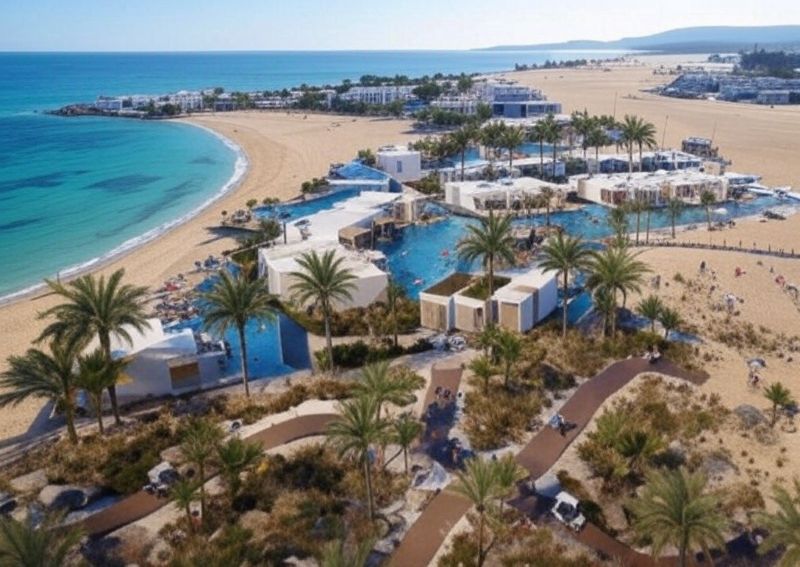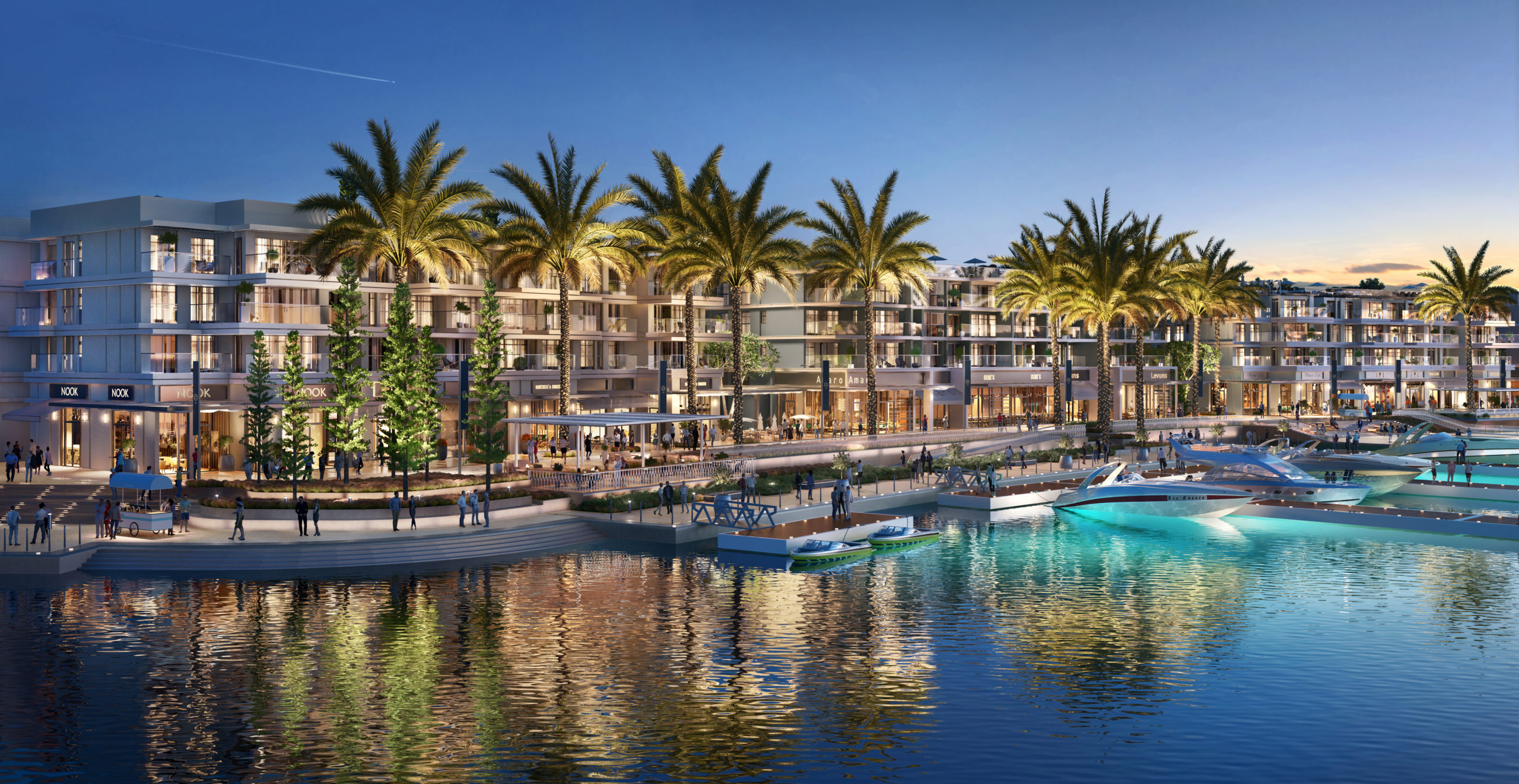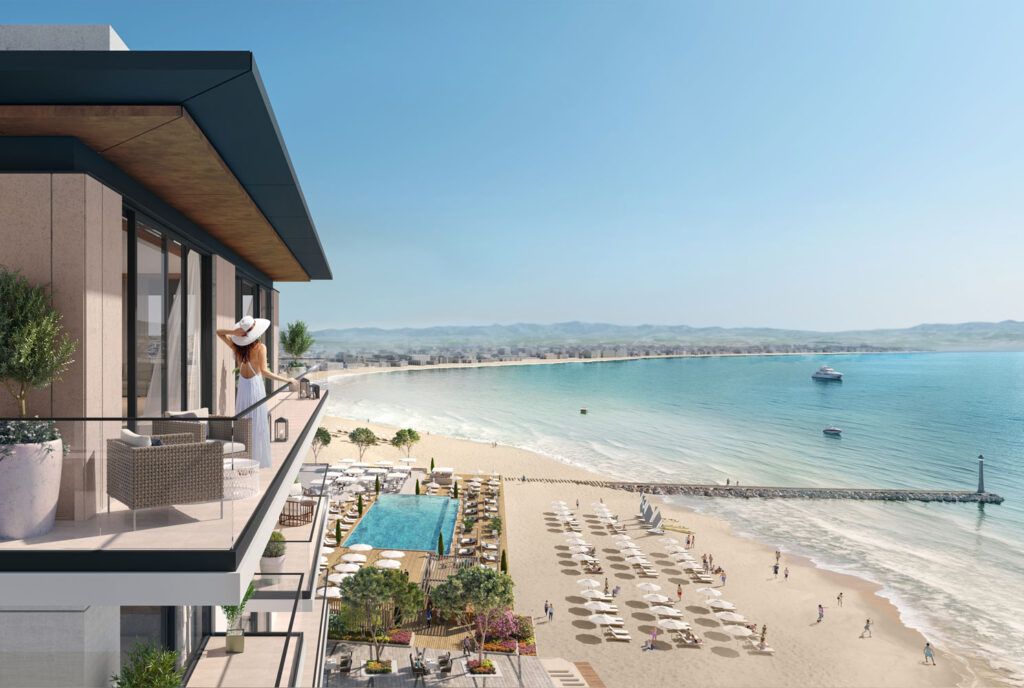Eagle Hills Alabbar’s Proposed Ulcinj Investment for Velika Plaza
Alabbar’s company, Eagle Hills, has expressed interest in Ulcinj, particularly the Velika Plaža (Long Beach) area, a 13-km stretch of undeveloped coastline. Here’s what’s known about the plans based on available information:

Eagle Hills’ Ulcinj Investment
Eagle Hills Ulcinj Investment: Velika Plaža Development Sparks Hope and Protests in 2025″
- Scale and Vision: The proposed investment is described as a mega-project, with figures cited between €30 billion, though these numbers are debated for their reliability. The plan includes:
- A luxury tourism complex with high-end hotels, villas, and a yacht marina.
- An airport in Štoj to make Ulcinj more accessible to international tourists, extending the tourist season.
- A modern hospital, potentially as a community benefit, since Ulcinj lacks advanced medical facilities.
- Two universities, marinas, and other infrastructure to create a “Dubai-style” destination, though Alabbar has emphasized respecting Montenegro’s cultural identity.
- Beach Lease Controversy: In March 2025, Eagle Hills won a tender to lease nine of 19 beaches on Velika Plaža for four years, sparking protests from locals who feared losing control of their coastline. Alabbar offered to let local leaseholders retain some beaches at their original bid prices, but tensions persisted over a proposed 99-year lease for the entire area, which many deemed unacceptable.
- Economic Promises: Supporters, including Montenegro’s Prime Minister Milojko Spajić, compare the project to Porto Montenegro, which boosted Tivat’s economy through jobs, higher salaries, and tax revenue. The Ulcinj project could similarly transform the region, which has a modest €16 million municipal budget and relies on state subsidies.
- Local Opposition: Residents and officials, including Ulcinj’s mayor Genci Nimanbegu and politicians Dritan Abazovic and Mehmed Zenka, have protested, arguing that the deal lacks transparency and threatens Ulcinj’s cultural and natural heritage. Critics fear “Dubai-fication,” gentrification, and environmental damage to the beach and nearby wetlands like the Ulcinj Salina, a protected Ramsar site. Some allege the project could enable money laundering or favor foreign interests over locals.
- Alabbar’s Stance: In April 2025, Alabbar stated he’s not just building luxury complexes but aims to improve lives, promising transparency, social housing (one free unit for every three built), and support for local businesses over global chains. He claimed his developments would reflect Montenegro’s “soul,” not replicate Dubai.
Who is Mohamed Alabbar?
Mohamed Alabbar is an Emirati entrepreneur and one of the most influential real estate developers in the Middle East. Key points about him include:
- Founder of Emaar Properties: He established Emaar in 1997, leading it to develop iconic projects like the Burj Khalifa and Dubai Mall. Emaar is partly owned by Dubai’s government, tying Alabbar to high-profile state-backed initiatives.
- Chairman of Eagle Hills: Since 2014, he’s led Eagle Hills, a private investment and development firm based in Abu Dhabi, focusing on large-scale urban projects in Europe, Africa, and the Middle East, such as Belgrade Waterfront in Serbia and a marina in Durrës, Albania.
- Global Influence: Alabbar is known for ambitious, luxury-focused developments, often transforming underdeveloped areas into high-end tourist or commercial hubs. His projects emphasize modern infrastructure, like hotels, marinas, and airports, but sometimes face criticism for prioritizing profit over local interests.
Key Details of Alabbar’s Investment Plans in Ulcinj:
- Scale and Vision: Alabbar’s company, Eagle Hills, reportedly proposed a mega-project that could include a new airport in Štoj, luxury resorts, a hospital, marinas, and universities, with investments estimated at up to €30 billion over a 99-year lease of Velika Plaža.
- Airport Project: The construction of an airport in Štoj is a cornerstone of the plan, intended to boost accessibility and extend Ulcinj’s tourism season by enabling direct international flights. Existing municipal planning documents support this idea, noting the area’s strategic location near the Albanian border.
- Luxury Tourism Focus: Alabbar aims to develop Ulcinj as a high-end tourism destination, emphasizing sustainable projects that respect Montenegro’s cultural identity. He has stated, “I don’t want to build something in Ulcinj that looks like Dubai. If I’m in Montenegro, I want the city to carry the Montenegrin soul.”
- Controversy and Local Response: The proposal faced significant opposition from Ulcinj residents and local officials, who protested against a 99-year lease of Velika Plaža, fearing loss of cultural heritage and environmental damage. Banners at protests read, “Ulcinj is not for sale” and “Hands off the Great Beach.” Critics argued for sustainable development that prioritizes local involvement. Following backlash, Eagle Hills reportedly offered to withdraw from a beach lease tender to allow local lessees to retain control at original bid prices.
- Current Status: While Prime Minister Milojko Spajić signed agreements to pave the way for Alabbar’s investments, parliamentary approval remains pending, with mixed political support. The controversy highlights tensions between attracting foreign investment and preserving Ulcinj’s identity as a natural and cultural gem.
Background on Alabbar’s Influence:
- Alabbar’s track record with Emaar Properties demonstrates his ability to execute large-scale, transformative projects. Emaar is one of the largest real estate developers in the Middle East, with a portfolio spanning residential, commercial, and hospitality sectors.
- Through Eagle Hills, Alabbar has expanded into international markets, including Serbia and Albania, where he has also received warm receptions for similar investment proposals.
- His approach combines private capital with state partnerships, as seen in projects like Porto Montenegro, which turned a derelict naval base into a luxury marina and resort.
Challenges and Opportunities:
- Opportunities: Ulcinj’s underdeveloped infrastructure compared to northern Montenegro (e.g., Budva, Kotor) presents a unique opportunity for Alabbar to create a new luxury destination. The region’s 13-km sandy beach and proximity to Albania make it attractive for investors targeting high-spending tourists.
- Challenges: Local opposition, environmental concerns, and political hurdles could delay or alter the project. The ethnic Albanian majority in Ulcinj adds a cultural dynamic, with tourism currently driven largely by visitors from Kosovo, which may influence the project’s target audience.
Critical Perspective
While Alabbar’s track record shows he can deliver transformative projects, skepticism is warranted. The €30 billion figure seems exaggerated compared to his past projects (e.g., Belgrade Waterfront cost €3 billion). Critics like Jovana Janjušević from Montenegro’s CZIP argue the economic benefits for locals are unclear, and environmental risks, like altering the Bojana River or harming Velika Plaža’s therapeutic sands, are significant. The lack of public project documents fuels distrust, and the 99-year lease proposal raises fears of Ulcinj losing sovereignty over its coast.
Overview of Eagle Hills
Eagle Hills, founded in 2014 by Mohamed Alabbar in Abu Dhabi, is a private real estate investment and development company specializing in large-scale, mixed-use urban projects. It operates in 18 countries across the Middle East, Africa, and Europe, focusing on luxury residential, commercial, hospitality, and tourism developments. Its mission is to “redefine modern living” by creating sustainable, high-quality communities, often in emerging markets. Alabbar, also the founder of Emaar Properties (Burj Khalifa, Dubai Mall), brings a reputation for ambitious, government-backed projects, though Eagle Hills is distinct from Emaar, with a 25% Emaar stake since 2023.
Key Eagle Hills Projects
Eagle Hills’ portfolio includes over 30 projects, ranging from waterfront resorts to urban districts. Below, I analyze notable examples to identify patterns and lessons for Ulcinj, grouped by region for clarity:
Middle East
- Maryam Island, Sharjah, UAE (AED 2.7 billion, launched 2018):
- Description: A 3.6 million sqm waterfront community with 1,500 apartments, hotels (e.g., Address Beach Resort), retail, and amenities like yacht docks. It’s a partnership with Sharjah Investment & Development Authority (Shurooq).
- Outcome: Sales began in 2019 for Indigo Beach Residence, targeting mid-to-high-end buyers. It’s boosted Sharjah’s tourism profile, with affordable luxury compared to Dubai. Completion of phases is ongoing, with Crystal 2 sales launched in 2023.
- Impact: Created jobs (construction, hospitality) and raised property values locally. Criticized for limited affordable housing despite social promises.
- Ulcinj Relevance: Similar to Ulcinj’s Velika Plaža plan, Maryam Island emphasizes tourism and luxury. Its marina and beachfront focus mirror Ulcinj’s proposed yacht marina and hotels.
- Ramhan Island, Abu Dhabi, UAE ($3.5 billion, launched 2022):
- Description: A 43 million sqm island with 1,800 villas, 900 marina residences, a luxury hotel, and private beaches. It’s marketed as a nature-centric retreat.
- Outcome: Sales started in 2023, targeting ultra-wealthy buyers (villas from 3,746–15,392 sqm). Construction is underway, with strong investor interest due to Abu Dhabi’s stable market.
- Impact: Expected to enhance Abu Dhabi’s luxury tourism but faces scrutiny for environmental impact on mangroves and exclusivity limiting local access.
- Ulcinj Relevance: The scale and exclusivity align with Ulcinj’s €30 billion vision, though Ramhan’s smaller scope suggests Ulcinj’s cost estimates may be inflated.
- Description: A 43 million sqm island with 1,800 villas, 900 marina residences, a luxury hotel, and private beaches. It’s marketed as a nature-centric retreat.
- Marassi Al Bahrain, Bahrain (Ongoing, launched 2016):
- Description: A 6,600-apartment urban community with Marassi Galleria (retail), two hotels (Address, VIDA), and a 2-km promenade.
- Outcome: Partially completed, with retail and hotels operational by 2024. It’s a flagship for Bahrain’s tourism diversification.
- Impact: Generated 1,000+ jobs and increased foreign investment but criticized for favoring expats over locals in housing allocation.
- Ulcinj Relevance: The mixed-use model (residences, retail, hospitality) resembles Ulcinj’s plan for hotels, villas, and a marina, though Ulcinj’s airport addition is unique.

Eagle Hills Ulcinj Investment
Europe
- Belgrade Waterfront, Serbia (€3 billion, launched 2015):
- Description: A 1.8 million sqm urban renewal project along the Sava River, with 6,000 residences, hotels, a mall, and cultural facilities like a theater. A joint venture with Serbia’s government.
- Outcome: By 2025, 30% complete, with 2,000 apartments sold. It’s Serbia’s largest foreign investment, boosting Belgrade’s skyline and economy.
- Impact: Created 10,000 jobs (construction, services) and raised GDP by 1.5% locally. However, it sparked protests over secretive planning, forced evictions, and gentrification fears.
- Ulcinj Relevance: The controversy mirrors Ulcinj’s beach lease protests, suggesting Eagle Hills may face similar pushback. Its urban focus differs from Ulcinj’s tourism-driven plan.
- Description: A 1.8 million sqm urban renewal project along the Sava River, with 6,000 residences, hotels, a mall, and cultural facilities like a theater. A joint venture with Serbia’s government.
- Durrës Yachts & Marina, Albania (Ongoing, launched 2020):
- Description: A luxury Adriatic destination with beachfront residences, a marina, retail, and dining. It’s Albania’s largest tourism project.
- Outcome: Construction advanced by 2024, with strong European buyer interest. It’s expected to extend Albania’s tourist season.
- Impact: Projected to create 5,000 jobs and double Durrës’ tourism revenue. Environmental concerns (coastal erosion) and local displacement risks persist.
- Ulcinj Relevance: Closest parallel to Ulcinj, as both target Adriatic luxury tourism with marinas and hotels. Durrës’ smaller scale suggests Ulcinj’s €30 billion figure is ambitious.
- Description: A luxury Adriatic destination with beachfront residences, a marina, retail, and dining. It’s Albania’s largest tourism project.

Eagle Hills Ulcinj Investment
- Grand Budapest, Hungary ($12.3 billion, launched 2025):
- Description: A 100-hectare mixed-use district with parks, residences, and skyscrapers, redeveloping a derelict Budapest zone. Emphasizes sustainability with smart city tech.
- Outcome: Land acquired in February 2025; planning underway. It’s backed by Hungary’s government, aiming for completion by 2035.
- Impact: Expected to create 20,000 jobs and add €5 billion to GDP. Critics warn of overdevelopment and cultural mismatch (initial “Mini Dubai” branding was dropped).
- Ulcinj Relevance: Shares Ulcinj’s urban revitalization goal but focuses on city living, not beach tourism. Its smart city tech could inspire Ulcinj’s infrastructure plans.
Africa
- La Gare, Addis Ababa, Ethiopia ($1.8 billion, launched 2018):
- Description: A 360,000 sqm mixed-use project with 4,000 residences, hotels, retail, and a park near Bole Airport. Includes social housing with government equity (27%).
- Outcome: Phase I sales began in 2020; construction is ongoing. It’s one of Ethiopia’s largest urban projects.
- Impact: Created 3,000 jobs and modernized Addis Ababa’s center. Delays due to political instability and funding issues raised concerns, but it’s progressing.
- Ulcinj Relevance: The social housing component could address Ulcinj’s local concerns, though Ethiopia’s urban context differs from Ulcinj’s coastal focus.
- Soul Luxury Beach Resort, Egypt (EGP 1.9 billion for Phase 1, launched 2023):
- Description: A North Coast resort with villas, apartments, and retail, built with Orascom Construction.
- Outcome: Phase 1A (Flow, Breeze parcels) is under construction, set for completion by 2026. It targets Egypt’s growing tourism market.
- Impact: Expected to create 1,500 jobs and boost coastal tourism. Environmental scrutiny over water usage in arid areas persists.
- Ulcinj Relevance: Like Ulcinj, it’s a luxury beachfront project, but Egypt’s established tourism market contrasts with Montenegro’s emerging one.
Analyzing Eagle Hills’ projects reveals consistent strategies and challenges:
Patterns and Trends
- Luxury and Tourism Focus: Most projects (Durrës, Marassi, Ulcinj) target high-end tourists with marinas, hotels, and villas, aiming to extend seasons and attract global wealth. This aligns with Ulcinj’s goal to rival Porto Montenegro.
- Government Partnerships: Eagle Hills collaborates with governments (Serbia, Bahrain, Albania, Montenegro), securing land and incentives but risking perceptions of favoritism, as seen in Ulcinj’s lease controversy.
- Mixed-Use Urbanism: Projects like Belgrade Waterfront and Grand Budapest blend residences, retail, and public spaces, creating “cities within cities.” Ulcinj’s plan leans more toward tourism than urban density.
- Sustainability Claims: Eagle Hills emphasizes smart tech and green design (e.g., Grand Budapest’s energy-efficient buildings), but environmental critiques (e.g., Durrës’ coastal impact) suggest gaps between rhetoric and reality. Ulcinj’s Salina wetlands face similar risks.
- Economic Impact: Projects generate jobs (5,000–20,000 per project) and GDP growth (1–2% locally), but benefits often skew toward elites, fueling gentrification fears in Ulcinj and elsewhere.
- Controversy Magnet: Belgrade, Durrës, and Ulcinj faced protests over transparency, land rights, and cultural erosion. Eagle Hills’ response—promising social benefits (housing, hospitals)—has mixed success in quelling dissent.
The Ulcinj project, centered on Velika Plaža, mirrors Eagle Hills Adriatic focus in Durrës and luxury tourism model in Bahrain and Egypt. Key insights:

Relevance to Ulcinj
- Scale and Cost: Ulcinj’s €30 billion estimate dwarfs Durrës (€2 billion) and Belgrade (€3 billion), suggesting exaggeration or broader infrastructure (e.g., airport, universities). Realistic costs may align closer to €5–10 billion.
- Community Tension: Like Belgrade, Ulcinj’s lack of transparent planning (e.g., 99-year lease rumors) risks alienating locals. Eagle Hills’ offer of social housing and local business support in Ulcinj echoes Ethiopia’s model but needs clear execution.
- Economic Potential: If successful, Ulcinj could mirror Marassi’s job creation (1,000–5,000 jobs) and tourism boost, but overdevelopment could harm its natural appeal, as feared in Durrës.
- Environmental Stakes: Ulcinj’s Salina and therapeutic sands are vulnerable, like Ramhan’s mangroves. Eagle Hills must prioritize mitigation to avoid Durrës-style backlash.